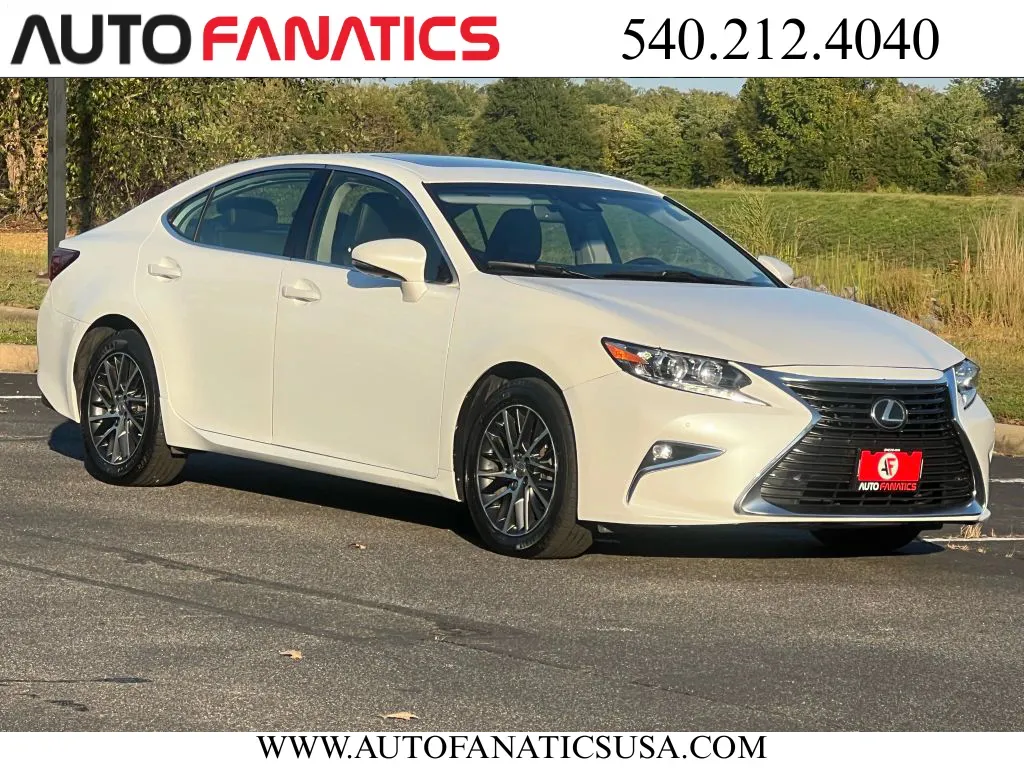Monthly Car Payment Calculator: Your Guide to Affordable Auto Loans
Car financing can sometimes feel like its own language, with terms like APR, principal, and loan amortization. It’s enough to make anyone’s head spin. A monthly car payment calculator is the perfect tool to cut through the jargon and make sense of it all. It takes the key ingredients of an auto loan—the car’s price, your down payment, the interest rate, and the loan length—and shows you the bottom line in plain English. This simple calculation gives you a clear, tangible starting point for your budget, taking the guesswork out of the equation and putting you in a position of knowledge and control as you begin your search for the perfect vehicle.
Key Takeaways
- Establish your budget before you shop: Use a car payment calculator to experiment with different vehicle prices, down payments, and loan terms. This helps you define a realistic price range and allows you to focus on cars you can comfortably afford.
- Look beyond the monthly payment for true affordability: A low payment can hide a higher total cost due to a long loan term or expensive ownership costs like insurance and fuel. Consider the total interest paid and factor in all car-related expenses for a complete financial picture.
- Take control of your financing to get the best deal: Check your credit score and get pre-qualified for a loan before you visit a dealership. This gives you a clear understanding of your borrowing power and allows you to negotiate terms from a position of strength.
How Do Car Payment Calculators Work?
A car payment calculator is one of the most powerful tools you can use when you start shopping for a vehicle. Think of it as your financial co-pilot, helping you map out your budget before you even step onto the lot. It takes the big picture—the price of the car, your down payment, and loan terms—and breaks it down into a clear, estimated monthly payment. This simple step gives you the confidence to shop for cars that truly fit your financial life, taking the guesswork out of the equation and putting you in control of your purchase.
What a Calculator Shows You
At its core, a car payment calculator gives you a snapshot of your potential auto loan. It primarily shows you two things: your estimated monthly payment and the total amount you’ll pay over the life of the loan, including interest. Seeing that monthly figure helps you understand how the payment will fit into your budget. The total loan cost is just as important, as it reveals how much you're actually paying for the car once financing is factored in. Using a car loan calculator is a fantastic way to get a realistic preview of your financial commitment before you fall in love with a car on the lot.
The Key Numbers You'll Need
To get the most accurate estimate from a calculator, you’ll need to have a few key pieces of information ready. First is the vehicle's price. Next, you'll enter your down payment amount—the cash you plan to put toward the purchase upfront. If you have a vehicle to trade in, you’ll need its estimated value; you can easily get your trade-in value online to have that number handy. Finally, you’ll input the loan term (the number of months you’ll be paying) and the interest rate, or APR, you expect to get. Having these details prepared will give you a much clearer picture of your potential payments.
Common Myths About Car Payments
It’s easy to get tripped up by common misconceptions about car payments. One of the biggest myths is that a low monthly payment is always a great deal. Often, a lower payment is achieved by stretching the loan over a longer term, which can mean you pay significantly more in interest over time. Another myth is that the amazing interest rates you see in ads are available to everyone. In reality, those rates are typically reserved for buyers with top-tier credit. That’s why it’s so helpful to get pre-qualified to see what interest rate you can actually secure for your next vehicle.
Know the Calculator's Limits
While incredibly helpful, a car payment calculator is an estimation tool, not a final quote. Its calculations are only as accurate as the numbers you provide. It’s also important to remember that most online calculators don’t include variables like sales tax, title, and registration fees, which will be part of your final purchase price. Interest rates can also fluctuate. The best way to use a calculator is as a starting point to establish a comfortable budget. From there, you can contact our team to get precise, transparent numbers that include all the details for a specific vehicle you’re interested in.
What Determines Your Monthly Car Payment?
Figuring out your monthly car payment isn’t just about the sticker price. Several key factors come together to determine that final number you’ll see each month, and understanding them puts you in the driver’s seat. Think of it like a recipe: the final dish depends on the ingredients you use. In this case, the ingredients are the vehicle’s purchase price, the size of your down payment, the interest rate you secure, the length of your loan, the value of your trade-in, and any applicable taxes and fees. Each one plays a crucial role in shaping your payment. A small change in one area, like a slightly lower interest rate or a larger down payment, can make a noticeable difference in your monthly budget. This is why simply looking at the total price of a car doesn't give you the full picture of its affordability. By learning how these elements interact, you can adjust them to find a payment plan that feels comfortable and sustainable for you. Using a car loan calculator is the best way to see these factors in action, allowing you to experiment with different numbers until you land on the perfect combination for your financial situation.
Purchase Price and Your Down Payment
The starting point for any car loan is the vehicle's price minus the money you put down upfront. This initial payment, or down payment, directly reduces the total amount you need to finance. The more you can contribute at the beginning, the less you'll have to borrow, which translates to a smaller monthly payment. For example, putting $5,000 down on a $25,000 SUV means you only need a loan for $20,000. A substantial down payment not only lowers your payment but also shows lenders you're a committed buyer, which can sometimes help you secure more favorable loan terms. It’s the most direct way to control your borrowing amount from the very start.
How Your Interest Rate Changes Things
Your interest rate is essentially the fee you pay for borrowing money, expressed as a percentage of the loan amount. A lower interest rate means you'll pay less in interest charges over the life of the loan, which can significantly reduce both your monthly payment and the total cost of the car. Your credit score is the biggest factor here; a higher score typically helps you qualify for a lower rate, saving you hundreds or even thousands of dollars. This is why it's so important to know where you stand with your credit. Getting pre-qualified for a loan is a great way to see what interest rates you might be offered before you even start shopping for a car.
Why the Length of Your Loan Matters
The loan term is how long you have to pay back the loan, usually shown in months—common terms are 48, 60, or 72 months. A longer term spreads the loan amount over more payments, resulting in a lower monthly bill that might seem more manageable. However, the trade-off is that you'll pay more in total interest over time because the loan is outstanding for longer. Conversely, a shorter term comes with higher monthly payments, but you’ll pay off the car faster and save a significant amount on interest. It’s a balance between a comfortable monthly payment and the overall cost of your vehicle, so you can choose what aligns best with your financial goals.
The Value of Your Trade-in
If you have a car to trade in, its value can act like a significant down payment. We’ll apply the value of your current vehicle directly to the price of your next one, which immediately lowers the amount you need to finance. This is a fantastic way to reduce your monthly payment and make your next car more affordable. Plus, here in Virginia, you only pay sales tax on the difference between the new car’s price and your trade-in’s value, which saves you even more money right off the bat. You can easily estimate your trade-in value on our website to get a clear idea of how much you could save on your next purchase.
Factoring in Sales Tax and Fees
The price you see on the window sticker isn't the final amount you’ll pay. You also need to account for sales tax, title and registration fees, and dealer fees, often called documentation or "doc" fees. These costs are part of the total purchase, and you have a choice: you can pay them upfront out of pocket, or you can roll them into your auto loan. While adding them to the loan is convenient and avoids a large initial cash payment, remember that it increases the total amount you're financing. This will slightly raise your monthly payment because you'll be paying interest on those fees over the entire life of the loan.
How to Use a Car Payment Calculator
A car payment calculator is one of the most powerful tools you can use when you're figuring out your budget. It takes the guesswork out of the equation and gives you a clear picture of what your monthly payments could look like. Think of it as your financial co-pilot, helping you find a path that works for your wallet before you even step onto the lot. Let's walk through how to use it effectively.
Gather Your Information
To get the most accurate estimate from a car payment calculator, you’ll want to have a few key pieces of information ready. Start with the price of the car you’re interested in—feel free to browse our used cars, trucks, and SUVs to get a realistic number. Next, decide on a down payment amount. You’ll also need an estimated interest rate (which is largely based on your credit score) and the loan term, which is the number of months you plan to take to pay off the loan. If you have a vehicle to trade in, you can get its value and have that number handy, too.
A Quick Step-by-Step Guide
Using the calculator is the easy part. Once you have your numbers, you can start plugging them in. Our Car Loan Calculator is designed to be straightforward. You’ll begin by entering the vehicle’s price. Then, input your down payment, the value of your trade-in, and the loan term you’re considering (like 48, 60, or 72 months). Finally, add the estimated interest rate. The calculator will instantly process this information to give you an estimated monthly payment, helping you see how these different factors work together to shape your financing options.
Understand Your Results
After you enter your information, the calculator will give you a breakdown of the loan. The most prominent number will be your estimated monthly payment, but don't stop there. Look for the other key figures, like the total amount of interest you’ll pay over the life of the loan and the total amount you’ll finance. Seeing these numbers helps you understand the complete financial picture, not just the monthly cost. This insight is crucial for making a smart, informed decision that you'll feel good about for years to come.
Compare Different Scenarios
Here’s where the calculator really shines. You can experiment with different scenarios to find the perfect fit for your budget. What happens to your monthly payment if you increase your down payment by $1,000? How does shortening the loan term from 72 to 60 months affect the total interest you pay? By adjusting these variables, you can see the immediate impact on your payments. This allows you to find a comfortable balance between a manageable monthly bill and the lowest possible total loan cost.
Look for Extra Tools and Features
Many calculators are part of a larger suite of financial tools designed to help you. For example, after you find a monthly payment that works for you, the next logical step is to see what kind of financing you qualify for. That’s why we offer a simple way to get pre-qualified with Capital One right on our site. Using these tools together gives you a comprehensive view of your buying power and helps streamline the entire process, making your car-buying experience smoother and more transparent.
Plan Your Budget with the Calculator
A car payment calculator is one of the most powerful tools you have when you start shopping for a vehicle. It’s not just about crunching numbers; it’s about giving you a clear picture of your financial future so you can make a smart, confident decision. Think of it as your personal financial co-pilot. By plugging in a few key details, you can move beyond guesswork and see exactly how a car loan will fit into your life. This simple step helps you understand the full scope of your purchase, from the monthly payment to the total interest you’ll pay over time.
Using a car loan calculator before you even start browsing our inventory puts you in the driver’s seat of the buying process. It allows you to experiment with different scenarios—what if you put more money down? What if you choose a shorter loan term? Answering these questions at home helps you establish a realistic budget and walk into the dealership prepared. It’s all about creating a plan that works for you, ensuring your new car is a source of joy, not financial stress.
Monthly Payment vs. Total Loan Cost
It’s easy to get fixated on the monthly payment, but it’s only one piece of the puzzle. A lower monthly payment can seem appealing, but it might come from a longer loan term, which often means you pay more in interest over the life of the loan. The calculator shows you the bigger picture: the total amount you'll finance, the total interest paid, and the complete loan cost. Seeing these figures side-by-side helps you understand the true cost of your vehicle and make a choice that saves you money in the long run.
Find Out What You Can Really Afford
The best way to avoid stretching your finances too thin is to know what you can truly afford before you fall in love with a car on the lot. A calculator lets you do just that. You can enter the vehicle’s price, your down payment, the value of your trade-in, and different loan terms to see an estimated monthly payment. Playing with these numbers helps you find a comfortable price range. This simple exercise empowers you to shop for used cars in Fredericksburg, VA with a clear and realistic budget in mind.
Remember the Extra Costs of Ownership
Your monthly car payment isn't the only expense to consider. Car ownership comes with other regular costs, and it’s smart to factor them into your budget from the start. These include auto insurance, fuel, routine maintenance like oil changes and tire rotations, and potential repairs. Planning for these expenses ensures your total transportation costs remain manageable. For extra peace of mind, you can also explore automotive protection plans that can help cover unexpected repair bills down the road.
Set a Budget You Can Stick To
Once you’ve used the calculator to understand all the costs, you can set a firm budget. Knowing your maximum purchase price and comfortable monthly payment before you start shopping is a game-changer. It keeps you focused on vehicles that fit your financial plan and prevents you from overspending. We recommend researching the typical prices for the models you’re interested in so you have a good baseline. This preparation makes the entire car-buying process smoother and more enjoyable because you’re shopping with confidence.
How Your Credit Score Fits In
Your credit score plays a major role in the auto loan you can get. Lenders use it to determine your interest rate—a higher score typically means a lower rate, which translates to lower monthly payments and less interest paid over time. Before you apply for a loan, it’s a good idea to know where you stand. You can get pre-qualified to see what kind of rates you might be eligible for without impacting your credit score. This gives you a clearer idea of your borrowing power and helps you budget more accurately.
Use All the Calculator's Features
A car payment calculator is more than just a tool for finding a monthly payment. The best calculators offer a suite of features designed to give you a complete picture of your auto loan. When you explore all its functions, you move from simply estimating a payment to strategically planning your purchase. Think of it as your financial co-pilot, helping you see how different variables affect your loan from every angle. By using these extra features, you can make smarter decisions, compare offers effectively, and find a loan that truly fits your financial life.
Visualize with Graphs and Charts
Numbers on a page can be hard to interpret, but a picture makes everything clearer. Many online calculators use graphs and charts to help you visualize your loan. For instance, a pie chart can show you the breakdown of your total cost, separating the principal (the car's price) from the interest you'll pay over time. Seeing that interest slice can be a powerful motivator to make a larger down payment or choose a shorter loan term. These visuals help you understand how different choices impact not just your monthly bill, but the total amount you’ll pay in the long run, making complex financial concepts easy to grasp.
Compare Different Loan Offers
One of the most powerful ways to use a car payment calculator is as a comparison tool. Don't just plug in numbers once and call it a day. Use it to test different scenarios side-by-side. You can enter details from various loan offers you've received to see which one is truly the best deal. What happens if you extend the loan term from 48 to 60 months? How does a slightly lower interest rate affect your total cost? By playing with the numbers, you can confidently compare apples to apples and choose the financing that saves you the most money. Once you have an idea of what works for you, you can get approved with a clear understanding of your budget.
Estimate Your Trade-in Value
Your current vehicle is a major asset in your car-buying journey. Most calculators include a field for your trade-in value, which is subtracted from the purchase price to lower the amount you need to finance. This gives you a more accurate estimate of your monthly payment. While some find they can get more money by selling privately, trading in at the dealership offers a convenient, straightforward process. To get a solid starting number for your calculations, you can get a real-time trade-in value for your current car online. This helps you build a realistic budget before you even start shopping.
Plan Your Payment Schedule
A good calculator does more than spit out a single monthly payment number. It shows you the entire financial road map of your loan. Look for a feature that generates an amortization schedule—a detailed table showing how each payment is split between principal and interest over the life of the loan. This schedule reveals the estimated total amount you'll finance, the total interest you'll pay, and your total loan cost. Using a car loan calculator to see this breakdown helps you understand the long-term commitment and can inform decisions like whether to make extra payments to pay off your loan faster.
Use It On the Go
The best tools are the ones you have with you when you need them. Most car payment calculators are mobile-friendly, so you can use them right from your phone while you're on the lot. Found a sedan or SUV you love? You can quickly pull out your phone, enter its price and your details, and get an instant payment estimate. This allows you to stay grounded in your budget and make informed decisions in real-time, rather than getting swept up in the excitement of a test drive. It’s a simple way to ensure every vehicle you consider fits comfortably within your financial plan.
Think Beyond the Monthly Payment
It’s easy to get laser-focused on the monthly payment. After all, it’s the number you’ll see leaving your bank account every month. But a smart car budget looks at the bigger picture—the total cost of ownership. This includes all the expenses that come with having a car, from insurance and gas to routine maintenance and unexpected repairs. Thinking about these costs upfront helps you avoid financial surprises and ensures the car you love is also a car you can comfortably afford for years to come.
Using a car loan calculator is a fantastic first step to see what your payment might be, but it’s just that—a first step. To truly understand what you’ll be spending, you need to account for the other essential expenses that don't show up in the loan agreement. A lower monthly payment on one car might seem appealing, but if it’s a gas-guzzler with high insurance rates, it could end up costing you more than a slightly pricier but more efficient vehicle. Let’s break down what those extra costs are so you can create a realistic budget and drive away with confidence.
Your Insurance Requirements
Before you can legally hit the road, you need car insurance. The cost can vary wildly depending on the car you choose, your driving record, and where you live. If you’re financing your vehicle, your lender will likely require you to carry "full coverage" insurance, which includes comprehensive and collision policies. This protects their investment (and yours!) but costs more than basic liability coverage. A great tip is to get a few insurance quotes on the specific cars, trucks, or SUVs you’re considering before you make a final decision. This way, you can factor that real-world cost into your monthly budget from the start.
Plan for Maintenance and Repairs
Every car needs a little TLC to keep it running smoothly. Your budget should include room for routine maintenance like oil changes, tire rotations, and new brake pads. It’s also wise to set aside a small fund for any unexpected repairs that might pop up. While we meticulously inspect every vehicle on our lot, planning for future upkeep is part of responsible car ownership. To help manage these costs, you can also explore automotive protection plans that offer peace of mind by covering major repairs after the factory warranty has expired, saving you from a potentially large, unexpected bill.
Don't Forget Registration and Fees
The price you see on the window sticker isn’t the final number you’ll pay. Remember to account for one-time costs like sales tax, title fees, and vehicle registration. These expenses are required to make the car legally yours and can add up to a few hundred dollars or more, depending on the vehicle's price and local regulations. You can often roll these fees into your auto loan, but if you’re able to pay them upfront, you’ll save a bit on interest over the life of the loan. We believe in total transparency, so feel free to ask us for a full breakdown of any additional fees.
Estimate Your Fuel Costs
Gas is one of the most significant ongoing expenses of owning a car. How much you spend will depend on your daily commute, your driving habits, and the vehicle's fuel efficiency (MPG). Before you fall in love with a specific model, take a moment to consider its gas mileage. A fuel-efficient sedan might be perfect for a long commute, while a family who primarily runs errands around town might find a larger SUV fits their needs without breaking the bank. You can use a resource like FuelEconomy.gov to compare the estimated annual fuel costs of different vehicles you’re interested in.
Understand How Depreciation Works
Depreciation is the gradual loss of a car's value over time. New cars experience the steepest drop in value—often losing over 10% the moment they leave the dealership. This is one of the biggest advantages of buying a high-quality used car. The original owner has already absorbed that initial, significant depreciation hit. By choosing a vehicle that’s even just a few years old, you get a reliable car for a much lower price, and it will hold its value better as you own it. It’s a financially savvy move that lets you get more car for your money and is a core reason why so many smart buyers choose pre-owned.
How to Get the Best Auto Loan
Finding the perfect car is exciting, but securing the right auto loan is just as important for your financial health. A great loan can save you hundreds or even thousands of dollars over time. The key is to do a little homework before you sign on the dotted line. By understanding your options and knowing what to look for, you can walk into the dealership with the confidence of a seasoned pro. Think of it as putting yourself in the driver’s seat of the financing process, not just the car. Let’s walk through the steps you can take to find a loan that fits your budget and puts you on the road with peace of mind.
The Benefits of Getting Pre-Qualified
One of the smartest first steps you can take is getting pre-qualified for a loan. Think of it as a financial dress rehearsal. Before you even start looking at cars, a pre-qualification gives you a clear estimate of how much you can borrow and what your interest rate might be. This process is typically quick and doesn't impact your credit score. Knowing your budget upfront prevents you from falling in love with a car that’s outside your price range. It also shows sellers that you’re a serious buyer, which can give you more leverage when you’re ready to make a deal.
Shop Around for Your Loan
You wouldn't buy the first car you see without comparing options, so why do that with your auto loan? It pays to shop around. Don't just assume the dealership will have the best offer. Check with your own bank or a local credit union, as they often provide competitive rates for their members. Getting quotes from a few different lenders allows you to compare offers side-by-side. When you have a pre-approved offer in hand, you can confidently ask the dealership if they can beat it. This simple step ensures you’re getting the most favorable terms available to you and can start the approval process with a solid baseline.
Tips for Negotiating Your Terms
Walking into a negotiation prepared is the best way to get a great deal. Start by knowing your credit score and what you can realistically afford for a monthly payment. Use a car loan calculator to run the numbers beforehand. When you sit down to talk terms, focus on the total price of the car and the loan's APR, not just the monthly payment. A low payment can be tempting, but it might be attached to a very long loan term that costs you more in interest. Don’t be afraid to ask questions and make a counteroffer. If the terms don’t feel right, you always have the power to walk away.
Know the Difference: APR vs. Interest Rate
You’ll see two key terms when discussing loans: interest rate and APR. They might seem similar, but they tell you different things. The interest rate is simply the percentage a lender charges you to borrow money. The Annual Percentage Rate, or APR, is the more important number. It includes the interest rate plus any additional lender fees or charges rolled into the loan. Because it represents the total cost of borrowing, the APR gives you a more accurate, apples-to-apples way to compare loan offers from different lenders. Always use the APR as your guide to find the true cost of the loan.
Avoid These Common Loan Mistakes
It’s easy to get caught up in the excitement of buying a car, but a few common mistakes can be costly. The biggest one is focusing only on the monthly payment. Lenders can lower your payment by extending the loan term, but you'll end up paying significantly more in interest over the life of the loan. Another pitfall is not reading the fine print. Look for things like prepayment penalties, which charge you a fee for paying off your loan early. Finally, be cautious about rolling negative equity from your old car into a new loan. While it can seem like an easy solution, it increases your loan amount and means you’ll be paying for a car you no longer own.
Helpful Tools for a Smart Decision
Making a big financial decision like buying a car can feel overwhelming, but you don’t have to go into it blind. The internet is full of fantastic resources that can help you understand your budget, know your financial standing, and feel confident before you even step onto the lot. Think of these tools as your personal research team, helping you gather all the information you need to make a choice that’s right for you. Using them will help you walk in with a clear plan and a solid understanding of what you can afford.
Resources for Budgeting
Before you start browsing for your next vehicle, the first step is always figuring out what you can comfortably afford. A great way to do this is by using an online car loan calculator. These tools let you play with the numbers to see how different factors—like the vehicle price, your down payment, and the loan term—will impact your monthly payment. You can quickly see how a larger down payment lowers your monthly cost or how a shorter loan term saves you money on interest over time. This simple step takes the guesswork out of budgeting and helps you set a realistic price range for your search.
Check Your Credit Score
Your credit score is one of the most important factors in securing an auto loan. Lenders use it to determine your creditworthiness and the interest rate they’ll offer you. Generally, a higher score can help you get a better interest rate, which means lower monthly payments and less money paid over the life of the loan. You can often check your score for free through your bank or credit card provider. Knowing your score beforehand gives you a better idea of what to expect and puts you in a stronger position when discussing financing. Once you have an idea of your credit standing, you can even get pre-qualified to see what rates you’re eligible for.
Estimate Your Car's Value
If you plan on trading in your current car, knowing its value is a huge piece of the puzzle. This amount can serve as a significant part of your down payment, directly impacting your new loan amount and monthly payments. While resources like Kelley Blue Book offer good general estimates, getting a specific offer is even better. You can easily find out what your car is worth by using an online tool to get your trade-in value. This gives you a concrete number to work with as you build your budget, helping you understand exactly how much you can put toward your next vehicle.
Track Current Interest Rates
Auto loan interest rates can change based on the market and a variety of personal factors, including your credit score, income, and the length of the loan. It’s a good idea to do a quick search for the current average auto loan rates to get a baseline understanding of what lenders are offering. This knowledge helps you recognize a competitive offer when you see one. Keep in mind that the best way to know your specific rate is to get approved for financing, as this will give you a firm offer based on your personal financial situation.
Find Other Financial Planning Tools
Beyond basic payment calculators, there are many other financial planning resources available to help you prepare. Websites like NerdWallet offer comprehensive tools that let you compare different loan scenarios and see the total cost of a loan, not just the monthly payment. These resources often come with helpful articles and guides that explain complex topics in simple terms. Taking a little time to explore them can deepen your understanding of the financial side of car buying, ensuring you feel fully prepared to make a smart, informed decision that fits your life.
Related Articles
- Car Loans Calculator: The Ultimate User's Guide
- How to Estimate Car Payment: A Simple Guide
- Estimate a Car Payment: The Ultimate Guide
Frequently Asked Questions
Is the monthly payment from the calculator the exact amount I'll pay? Think of the calculator as an excellent estimation tool, not a final quote. It gives you a very close idea of your payment based on the numbers you enter. However, it generally doesn't include variables like sales tax, title, and registration fees, which are part of the final purchase. The best way to use it is to establish a comfortable budget range for yourself before you start shopping.
Should I focus on getting the lowest monthly payment possible? While a low monthly payment is appealing, it isn't the only thing to consider. Often, a lower payment is achieved by extending the loan over a longer period, like 72 or 84 months. This can mean you pay significantly more in interest over the life of the loan. It's better to find a healthy balance between a monthly payment that fits your budget and a loan term that saves you money in the long run.
How much does my credit score really matter when getting a loan? Your credit score is one of the most significant factors in the auto loan process. Lenders use it to determine the interest rate, or APR, they can offer you. A higher credit score generally demonstrates a history of responsible borrowing, which can help you qualify for a lower interest rate. A lower rate can save you hundreds or even thousands of dollars over the course of your loan.
Besides the car payment, what other costs should I budget for? Your monthly car payment is just one part of your total transportation expenses. To create a realistic budget, you should also account for auto insurance, fuel, and routine maintenance like oil changes and tire rotations. Factoring in these regular costs from the beginning ensures that your new vehicle fits comfortably into your overall financial life without any surprises down the road.
What's the best first step to take when planning my budget? Before you even start looking at specific cars, the most helpful first step is to get pre-qualified for a loan. This process gives you a clear and personalized understanding of how much you can likely borrow and what your interest rate might be, all based on your specific financial situation. Knowing this information upfront puts you in a powerful position, allowing you to shop with confidence and a firm budget in mind.










